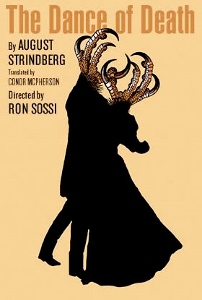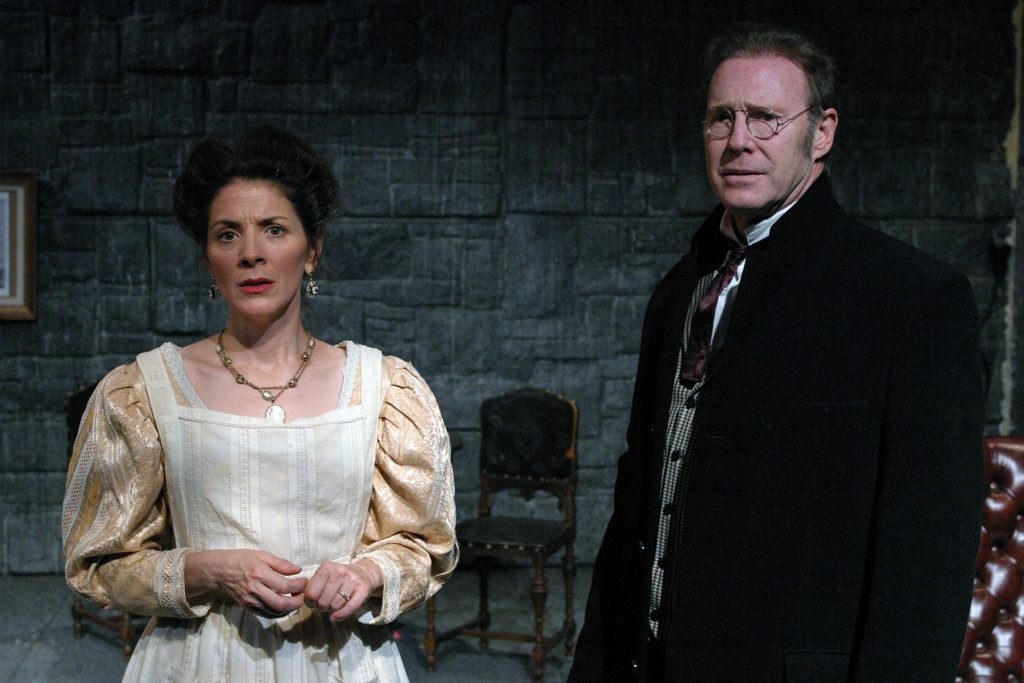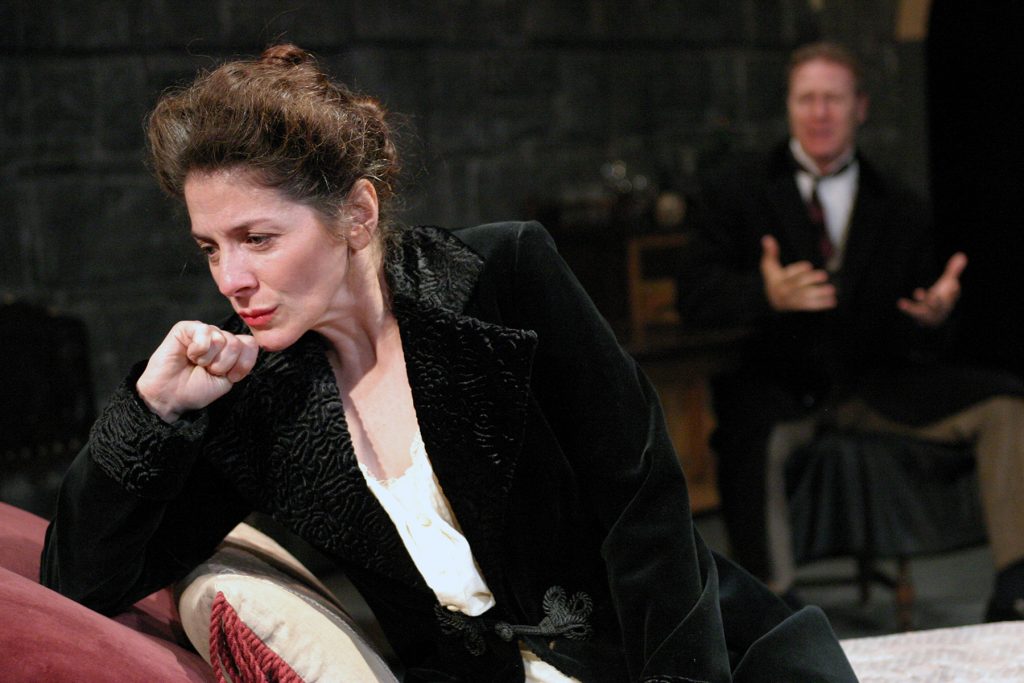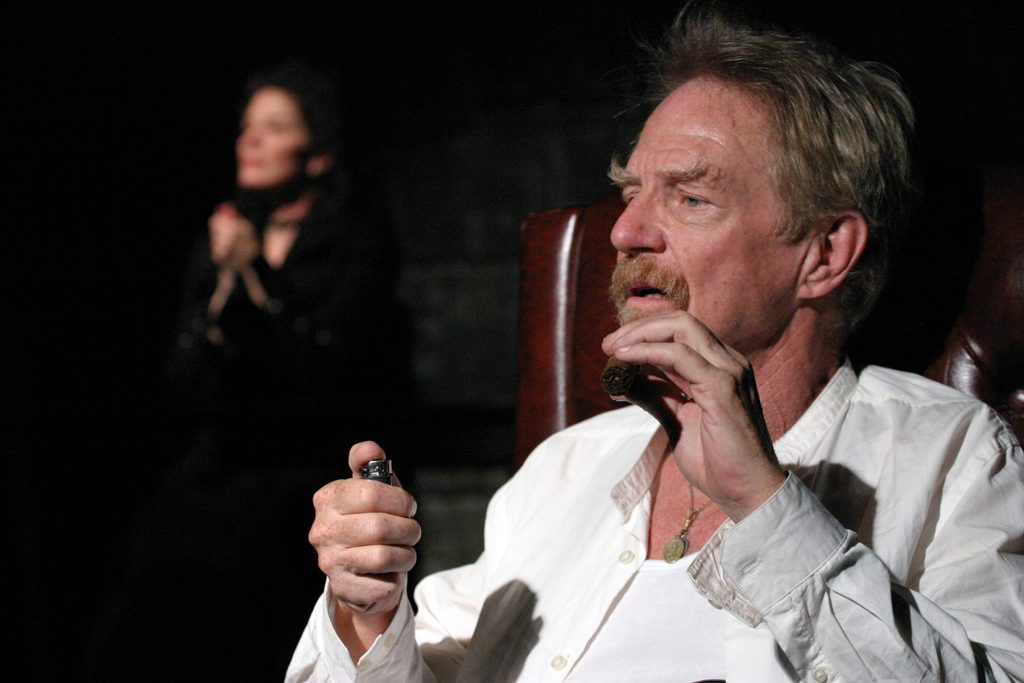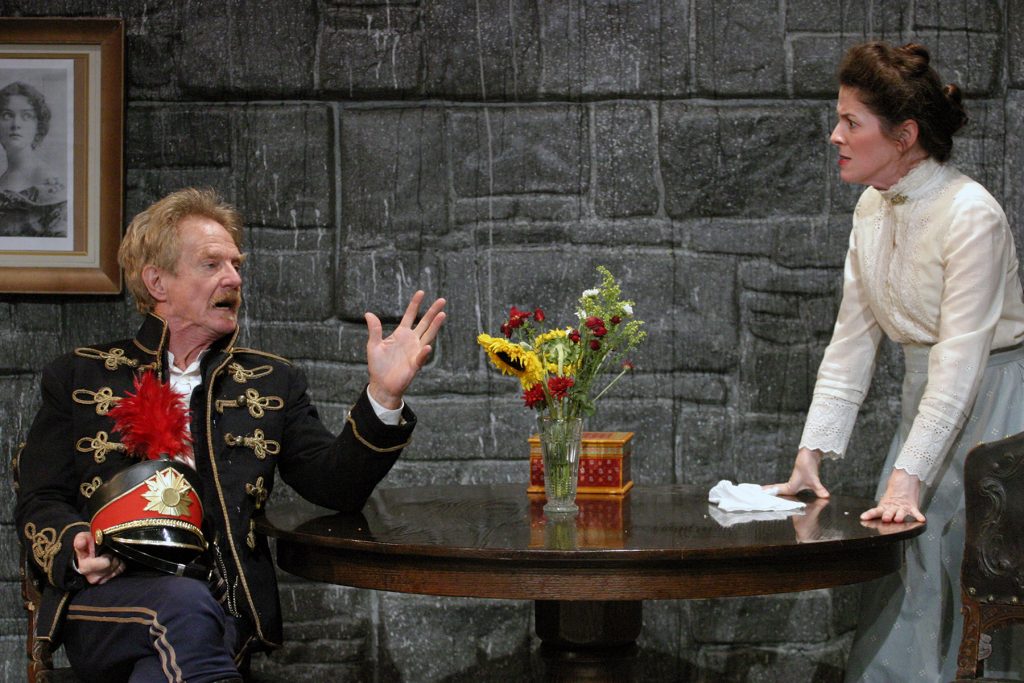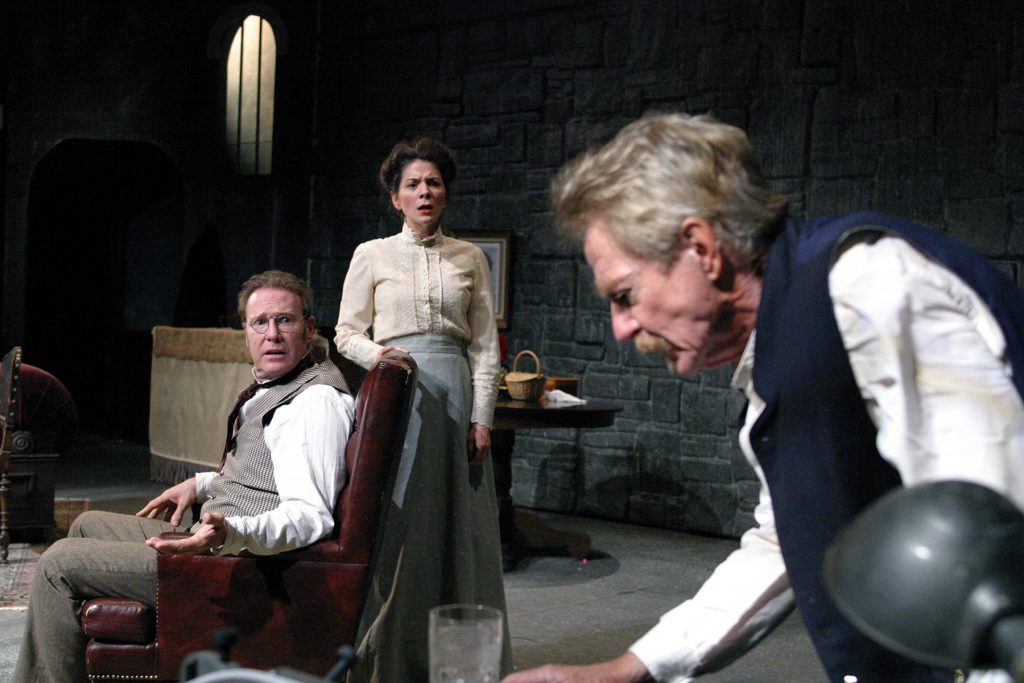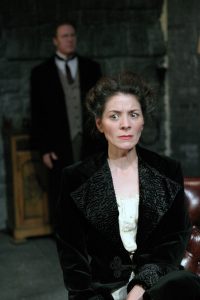MISERY LOVES COMPANY
In referring to August Strindberg’s 1900 play The Dance of Death as a foreshadowing of Edward Albee’s Who’s Afraid of Virginia Woolf, director Ron Sossi is on firm ground. Strindberg’s mordant characters (Alice, a former actress, and Edgar, an artillery captain) are certainly waltzing to the same music as George and Martha. And they, too, have symbiotically chained themselves to one another in a hell of their own making. Sossi is perhaps on shakier ground when he imagines that Albee “channeled” Strindberg. After all, isn’t it possible Albee saw a production of it or read the play in college? I mention this, because in eschewing the simpler rationale, Sossi opts for the more vivid, even hyperbolic choice. He has done the same thing in approaching this “new version” of The Dance of Death written in 2012 by acclaimed Irish playwright Conor McPherson. The tone is overwrought and ham-handed.
As the story begins, Edgar and Alice are isolated among a regiment of soldiers on an island, in a house that feels like the prison it once was. They will soon mark their silver wedding anniversary, if they don’t kill each other first. They are already at war, when the arrival of Kurt, Alice’s cousin, escalates and reshapes the battle. Betrayals, jealousies, and the titillating aura of former and current liaisons and ménages à trois abound.
Lizzy Kimball and Darrell Larson as Alice and Edgar have a rather interesting moment at the top of the show when they are still and quiet, but then, bang, they are off to the races with high-pitched, extravagant warfare. Vivid. Hyperbolic. And too much too soon. Larson asks what’s for dinner and Kimball acidly replies, “How would I know?” There’s no room for the audience to have the pleasure of discovering the mysteries of Alice and Edgar’s poisonous marriage on our own. It’s a directorial choice that does a disservice to Strindberg and McPherson alike.
Seemingly in another play entirely, Jeff LeBeau as Kurt delivers a performance of simplicity and suspense. He is acting in the play I would rather see; one where terrible secrets tumble out with no warning, where the mood can shift from sweet to terrifying in a single breath. LeBeau is fascinating to watch. Without moving a muscle or saying a word, he can reveal the character’s inner torment, and when he speaks, he’s entirely in the present. Every thought, every emotion feels as if he is experiencing it for the first time. When he deadpans “I thought my marriage was bad, but this is despicable,” it’s very funny, but it doesn’t come across as a joke someone has written, rather, as an astonished observation from a man fighting to understand the inexplicable. And when he draws blood, biting at Alice’s throat, it’s thrilling. The kick is that we feel the excitement bubbling up within him, and for a moment, we want to taste the blood too.
Structurally, McPherson has done a masterful job—rearranging and paring down in ways that illuminate what I imagine Strindberg was getting at. The language is occasionally too modern for my taste—calling someone a “dirt bag” for instance. I was curious to see if it’s one of those phrases that’s far older than we think; upon a quick search, it seems the phrase was in use as far back as the late 1890s, but only as it applied to actual bags of dirt, not to cads and bounders. Regardless of the scholarly basis one way or the other, though, if something feels modern, it takes us out of the world of the play. Of course, that could be McPherson’s intention, to highlight Strindberg’s prescience or something along those lines.
Overall, though, his text is tight and intelligent. And as LeBeau so ably demonstrates, the subtlety and depth is there for the playing.
The Dance of Death
Odyssey Theatre Ensemble
2055 S. Sepulveda Blvd in West L.A.
Fri and Sat at 8; Sun at 2
(check for additional Wed & Thurs performances)
ends on November 19, 2017
for tickets, call 310.477.2055 or visit Odyssey
